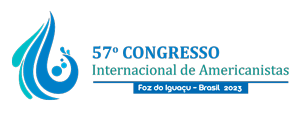| Dados do autor | |
|---|---|
| Nome | Katherine Godfrey |
| E-mail do autor | Email escondido; Javascript é necessário. |
| Sua instituição | Pennsylvania State University |
| Sua titulação | Doctor's Degree Student |
| País de origem do autor | Estados Unidos |
| Dados co-autor(es) [Máximo de 2 co-autores] | |
| Proposta de Paper | |
| Área Temática | 16. História |
| Grupo Temático | Tierra y poder. Instituciones, mediaciones y normatividades en la tenencia de la tierra en la América española y portuguesa (1600-1850) |
| Título | “‘Para hazer y edifficar la dicha villeta:’ Indigenous Rulers and Encomenderos in the 1572 Foundation of La Villa de Nuestra Señora Santa María de Leyva” |
| Resumo | This paper analyzes the 1572 foundation of La Villa de Nuestra Señora Santa María de Leyva, or Villa de Leyva, located in the present-day department of Boyacá, Colombia. Specifically, I explore the relationships maintained between Indigenous rulers and encomenderos regarding land and access to natural resources surrounding the town. By the late-16th century, the proposed site of Villa de Leyva was an attractive option for Spanish administrators and would-be settlers, as the region had proven to be an agricultural success for producing wheat and had the Indigenous population necessary for its cultivation. The foundation of Villa de Leyva, however, upset agreed upon modes of local resource exploitation devised between Indigenous rulers and encomenderos. Historians have examined the late-16th century formation of Indian resguardos, or communal lands, in the New Kingdom of Granada and its consequences for Indigenous pueblos throughout the Kingdom’s vast and varied terrain. Yet, scant attention has been paid to understanding the processes that preceded the legal creation of these communal lands. Lawsuits, sales, mercedes, and trueques consulted in Colombian and Spanish archives reveal that personal relationships, especially those between Indigenous rulers and encomenderos, were a crucial component in the creation of local land regulations. It was these dynamic, sometimes familial connections, forged in rural lodgings outside of Spanish cities that allowed Spaniards to maintain their delicate presence in the region in the first place. When viewed as a historical process and not as a singular event, the foundation of Villa de Leyva reveals that the town’s insertion into an overwhelmingly Indigenous landscape folded myriad actors into the tension of defining acceptable modes of land tenure in New Granada. This tension did not end with the creation of neat and discrete resguardos but persisted well into the seventeenth century. |
| Palavras-chave | |
| Palavras-chave |
|
